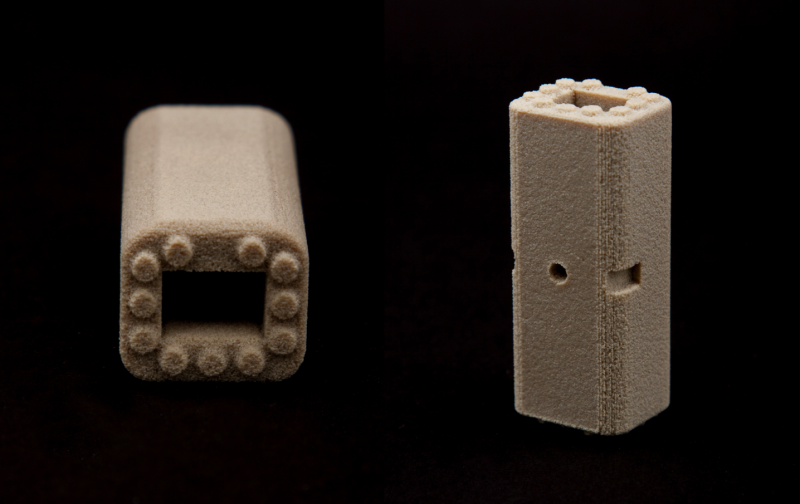Though an effective means of helping to heal broken bones, orthopaedic implants (as foreign matter) always run the risk of creating bacterial infections in the body. Antibiotics are the usual defence in such situations, but what if medical devices could resist bacterial build-up simply because of the way they are made?
Inspired by the naturally repellent surface of cicada-wings, Northeastern University researchers using Oxford Performance Materials’ (OPM) 3D printed PEKK plastic are on-track for creating anti-infection orthopedic devices.
Insect bioinspiration
Mian Wang, Garima Bhardwaj, and Thomas J Webster’s study at Northeastern has examined the growth of common bodily bacteria on the surface of spine implants, made using OPM’s Osteofab Technology.
The Osteofab process has been FDA certified since 2013. Using CT and 3D scan data, specialists at OPM can 3D print patient-specific models for cranial, facial and spinal treatments using a proprietary PEKK powder and laser sintering process.
With a finely-tuned surface structure, described as “nanopillars with random interpillar spacing”, Osteofab samples have been compared to industry-standard PEEK implants for efficacy. The structure mimics that found in the wings of cicadas that exhibit superhydrophobicity.

Comparison with the industry standard
In the first instance, Wang, Bhardwaj and Webster assessed the bacterial growth of S. epidermidis. Though a bacteria part of normal human flora, S. epidermidis is responsible for the type of infections caught in hospital when a patient’s immune system is low.
After 5 days of culture, more than 37% less S. epidermidis were found on the OPM 3D printed PEKK surface than on the industry standard equivalent.
In the second experiment, Wang, Bhardwaj and Webster tested P. aeruginosa that can cause hospital-related pneumonia, and has advanced antibiotic resistance mechanisms. By comparison to its commercial counterparts, the 3D printed PEKK implant shows 28% less growth after one day of culture, and around a 50% decrease after a full 5 days of culture.

A promising discovery
According to findings made by Wang, Bhardwaj and Webster, “this study demonstrated for the first time, the promise that nanostructured PEKK has for numerous anti-infection orthopedic implant applications,” warranting further investigation of OPM 3D printed PEKK.
The study discussed in this article was conducted by Mian Wang, Garima Bhardwaj, and Thomas J Webster of Northeastern University, Boston, and Wenzhou Medical University, China, with 3D printed samples provided by OPM. It has been published open-access in the International Journal of Nanomedicine here.
Stay up-to-date with the latest materials, software and hardware research by liking 3D Printing Industry on Facebook, following on Twitter and signing up to the free newsletter.
Searching for a new career move? Register on the industry 3D printing jobs site here.
Featured image shows the wingspan of an Italian mountain cicada. Photo by Thomas Hertach



